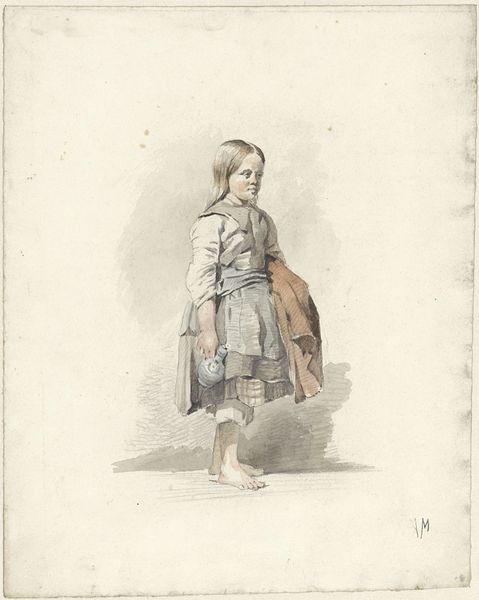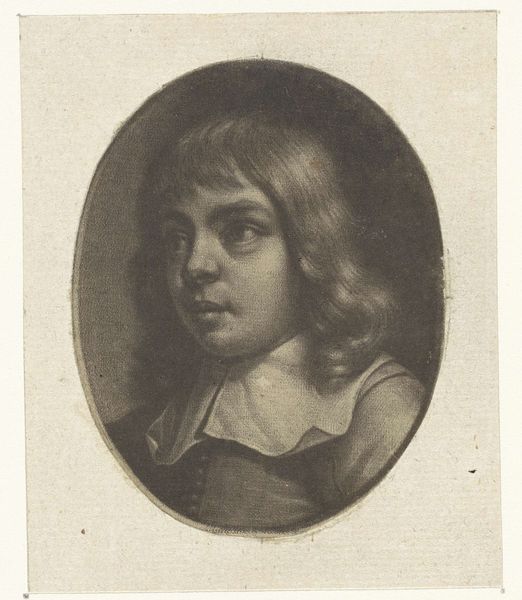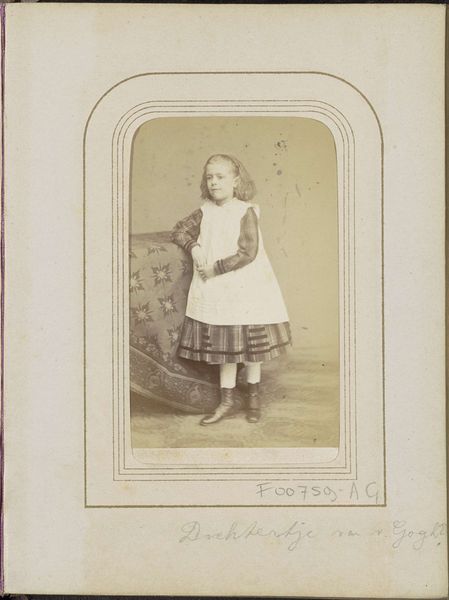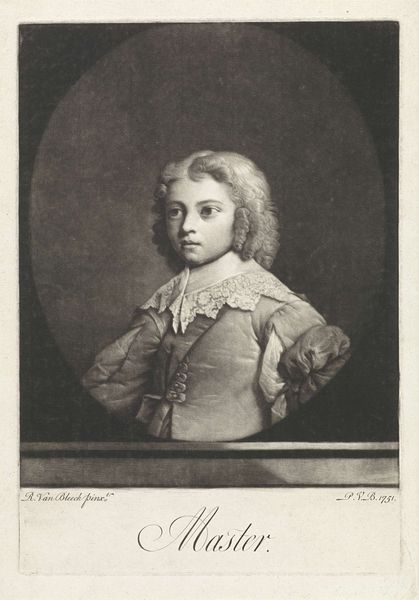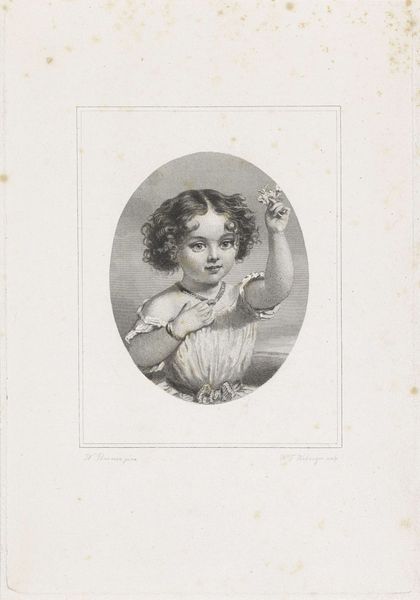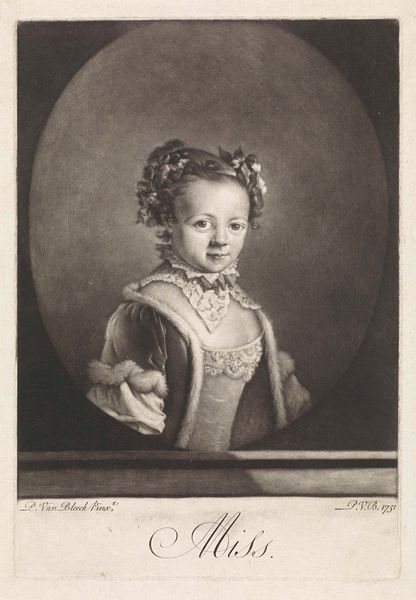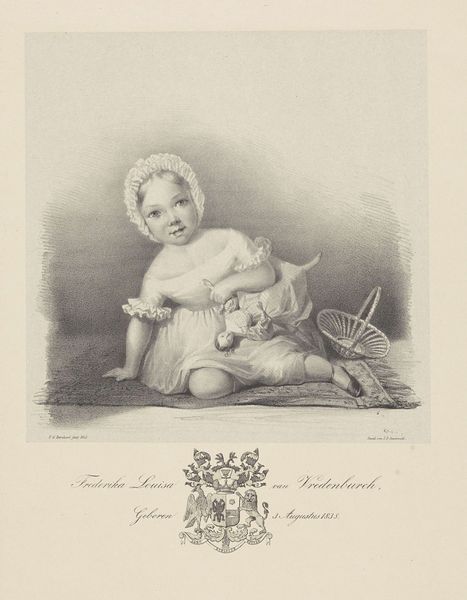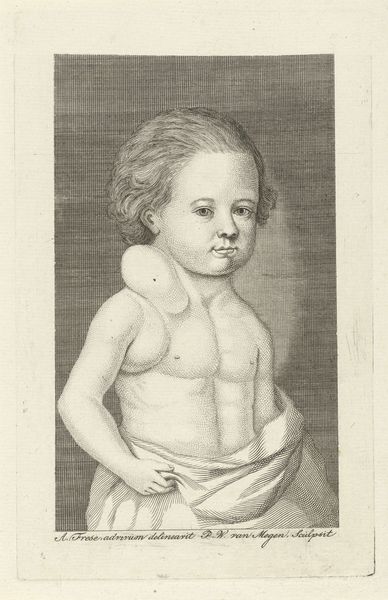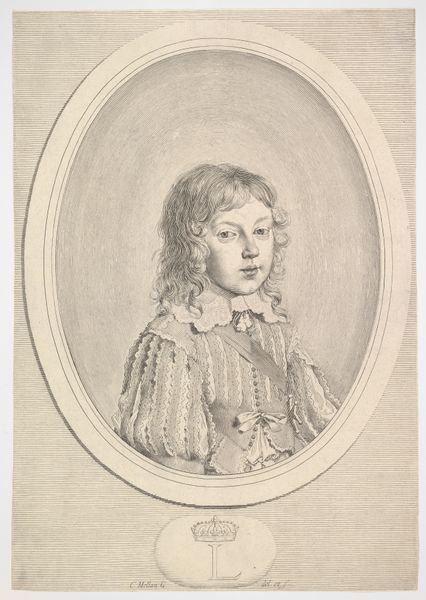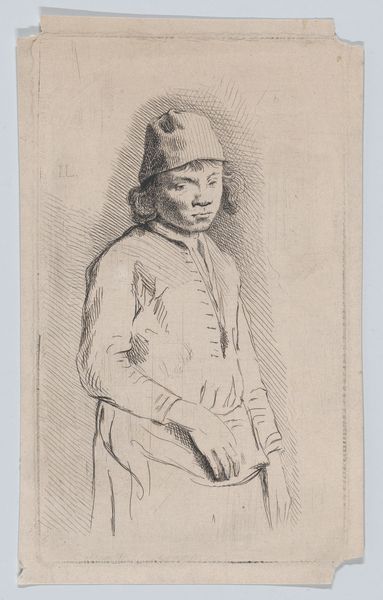
#
pencil drawn
#
amateur sketch
#
light pencil work
#
wedding photograph
#
photo restoration
#
pencil sketch
#
portrait reference
#
pencil drawing
#
portrait drawing
#
pencil work
Dimensions: height 286 mm, width 215 mm
Copyright: Rijks Museum: Open Domain
Editor: We’re looking at Hendrik Pothoven’s "Portret van een staande jongen," created around 1745. It’s a pencil drawing held in the Rijksmuseum. The subtle shading makes the boy look almost ethereal, but what I really notice is the composition – the way the light defines his features against the relatively plain background. What stands out to you? Curator: Intriguing observation. My attention is drawn to the materiality of the artwork itself. Notice the precision and control of the pencil strokes. How would you describe the lines forming his garments? Are they linear, gestural, precise or…? Editor: I think the artist has employed soft and gestural strokes for rendering clothing folds that communicate its delicate and refined composition. Curator: Precisely. Consider now the geometry of the portrait. The artist has balanced angularity and circularity, using primarily hard lines in the garment area. Observe how such visual devices construct form from nothing, and light and shadow sculpt depth from flatness, an act which may reference Platonic idealism, yes? How does that formal device help shape the composition and your interpretation? Editor: I hadn’t considered that before. The interplay of light and shadow does bring out the subject as a beacon of aristocratic wealth, and, without any deep background, all that matters is the form itself. I didn’t expect to view this through such a structured lens. Curator: Yes, it’s the careful arrangement and relationship of elements within the picture plane that generates aesthetic pleasure and meaning. Always consider not just what is represented, but how it is presented, with the intent of deconstructing how an artist's intentional manipulations and employment of certain design components such as composition, media, etc. can shape an artwork. Editor: I will keep that in mind. This discussion highlighted how crucial form is and that everything, even what appears simple, can offer us deeper meaning through analysis.
Comments
No comments
Be the first to comment and join the conversation on the ultimate creative platform.


